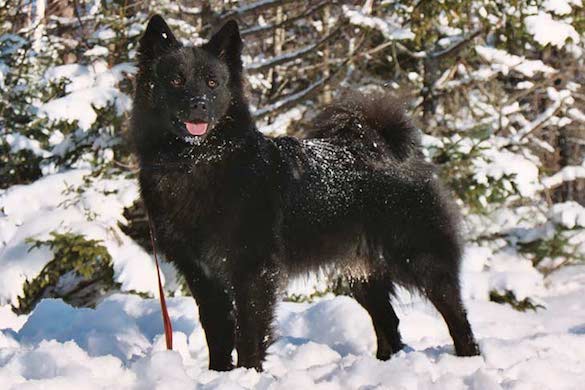
Having been founded in 1884 gave the AKC a five year head start on promoting purebred dogs, but the Svenska Kennelklubben, or Swedish Kennel Club wasn’t far behind. Formed on December 13, 1889 by a group of noblemen and hunters (who were often the same thing), the charter of the organization was “to create interest in, and promote, the breeding of mentally and physically healthy purebred dogs that are adequate in terms of working and hunting and that have a favorable appearance.” The last part, of course, referred to adhering to a conformation standard.
Today, the SKK still includes hunters and probably the descendants of those nobleman, but the majority of SKK’s 300 000+ members are ordinary dog owners. Approximately 70% of Sweden’s total canine population (approximately 780,000 dogs) are registered with the SKK, a club that is divided into 25 regional/county clubs, each responsible for membership care in its own county.
That said, there is dedication to breeders. Back in 2001, the SKK created a breed-specific strategy for every breed in Sweden based on data from a variety of sources. The “Rasspecifika Avelsstrategier,” a project unique in the canine world (and certainly at the time) is a document that contains the history of the breeds, a description of the present situation, and goals and strategies for the future. In essence, it’s an overall plan for each breed and serves as a guideline to breeders. More than 300 breeds have developed and submitted a breeding strategy to the SKK, and remaining breeds are those with very small populations in Sweden.
If you’re wondering about now why we chose a Swedish Lapphund’s image to appear with this post, it’s not because the breed is Swedish, but because in 1893, it was the breed of the very first dog ever to be registered with the Swedish Kennel Club.
Image courtesy of the AKC

This specific photo is Badji a pure bred male Swedish Lapphund living in Fairfax Vermont. The photo was taken when he was three years old at our family cabin in Glover Vermont. Badji was shipped to the United States by a breeder named Tadeja from Garisdene Kennels in Slovania. He was the second to arrive in the US; the first living with Patricia in CA. Sadly Badji left our family at age 7 after being diagnosed with multiple brain lesions. During his short time with us Badji exemplified every unique characteristic of the Swedish Lapphund breed.
Thank you for the update, Rhonda. We’d like to provide proper credit for the photo, might you be able to help with that?
Of course! Glad to help in any way you need.